
It’s easy to get lost in an unfamiliar and vast land such as India. In order to survive this hassle, understanding some basics like how to say right and left in Hindi, and polishing your general vocabulary related to directions in Hindi, is really important.

Table of Contents
- Why Learn About Directions in Hindi Language
- Benefits of Knowing Hindi Directions
- Learning How to Ask Directions in Hindi
- On the Map: Basics
- On the Map: Combinations
- On the Road
- Landmarks
- Must-Know Phrases for Asking for Directions
- Must-Know Phrases for Giving Directions
- Quick Summary with an Example Situation
- Climbing the Hindi Learning Ladder with HindiPod101.com
1. Why Learn About Directions in Hindi Language

The heavily populated nation that India is, it also ranks as the seventh-largest country in the world. What might come as a shock to many is that a large chunk of the country still lacks any specific indication on the map.
So, being a non-native, there’s a pretty good chance that you’ll get confused and derail from the right track. That’s why it’s essential to acquaint yourself with the common Hindi words for asking directions in Hindi.
Want to sound like a native? Don’t hesitate to reach out to us and get some amazing pronunciation help for directions in Hindi.
2. Benefits of Knowing Hindi Directions
Knowing how to ask directions in Hindi has more advantages than one might imagine. Here are a few benefits to give you an idea!
- Almost all the best tourist places in India remain heavily crowded. Getting stuck and losing yourself in there can be quite overwhelming. How about asking for directions in Hindi and finding your way out more easily?
- In urgent situations when you have to rush to the railway station or catch a flight, knowing basic directions in Hindi can be a life-saver.
- When living in India, you may also come across a medical emergency. Or in less pressing matters, learning how to ask directions in Hindi may come in handy if you’re trying to reach a local market or looking for a landmark.
- Moreover, using transportation such as auto rickshaws and cycle rickshaws in India can be tricky. The bottom line is that knowing even the most common Hindi travel phrases using directions, such as right-left in Hindi, gives the driver an idea of how well you know the place. And thus, the driver may present you with a greater edge for bargaining, too!
- In the end, it’s not just about us, right? A lot of people tend to go off the route all the time and desperately need our help. Wouldn’t it be amazing if you knew how to give directions in Hindi and make others feel safer?
Great! Now that you’ve realized how splendid asking and giving directions in the Hindi language can be, let’s check out the simple steps to do that and learn within the comforts of your home!
3. Learning How to Ask Directions in Hindi

The purpose of this lesson is to enhance your relevant Hindi vocab by focusing on significant location words in Hindi, and more particularly, asking for and giving directions in Hindi.
Let’s get ready for another helpful guide which is sure to save you from all language troubles. That means by the end of the article, you’ll not only have mastered simple phrases like right & left in Hindi or East-West in Hindi, but also the basics of how to give directions in Hindi.
4. On the Map: Basics
Although in day-to-day life, it’s more common to hear natives say things like “left” and “right,” it would be better for us to start with formal phrases first.
So, before we move on to practical and informal phrases for giving directions in the Hindi language, let’s thoroughly understand the cardinal directions in Hindi.
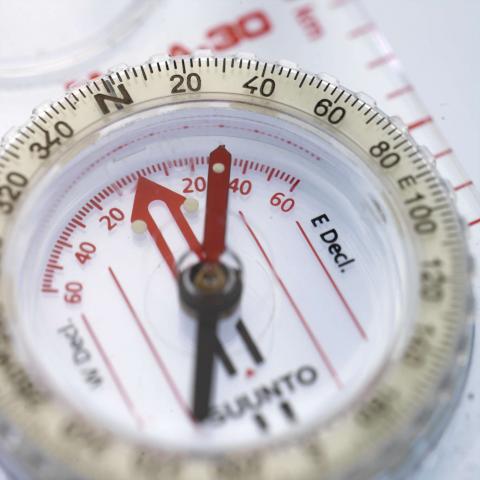
First, the four directions in Hindi:
| Hindi Words | English Meaning | Sentences |
| पूर्व / पूर्वी (puurv / puurvii) | East / Eastern | सूर्य पूर्व दिशा में उगता है। Suury puurv Disaa men ugaTaa hai. The sun rises in the east. | पहाड़ी से पूर्व दिशा में एक मंदिर है, जिसके दाहिनी ओर एक तालाब व पूर्व में घना जंगल है। pahaadii Se puurv Disaa men ek maNDir hai, jiSake DaahiNii or ek TaaLaab va puurv men ghaNaa jangaL hai. There is a temple on the east side of the hill which has a pond on its right side and a dense forest in the east. |
| पश्चिम / पश्चिमी (pascim / pascimii) | West / Western | सूर्य पश्चिम में अस्त होता है। Suury pascim men aST hoTaa hai. The sun sets in the west. | गुजरात भारत का पश्चिमी प्रदेश है जबकि असम पूर्व दिशा में है। gujaraaT bhaaraT kaa pascimi praDes hai jabaki aSam poorv Disaa men hai. Gujarat is a western state of India, whereas Assam is in the east direction. |
| उत्तर / उत्तरी (uTTar / uTTarii) | North / Northern | हिमालय पर्वत भारत के उत्तरी भाग में है। himaaLay parvaT bhaaraT ke uTTarii bhaag men hai. The Himalayan Mountains are in the northern part of India. |
| भारत का उत्तरी भाग ठंडा है लेकिन दक्षिण में काफ़ी गर्मी पड़ती है। bhaaraT kaa uTTari bhaag thaNdaa hai LekiN Daksin men kaafii garmii padaTii hai The northern part of India is cold, but the south remains quite hot. | ||
| दक्षिण / दक्षिणी (Daksin> / Daksinii) | South / Southern | हमारे घर का मुख्य द्वार दक्षिण दिशा की ओर है। hamaare ghar kaa mukhy Dvaar Daksin Disaa kii or hai. The main entrance of our house faces the south side. |
| गाँव के दक्षिणी कोने में विद्यालय और पूर्वी भाग में पुलिस चौकी है। gaanv ke Daksini koNe men viDyaaLay aur puurvii bhaag men puLiS caukii hai. The village has a school in the southern corner and the police station in the eastern part. |
- East: As you can see in the above table, “east” in Hindi is known as पूर्व (puurv). But do you know that there’s a colloquial word for it too? Well, local Indians also call “east” in Hindi पूरब (puurab).
- West: “West” in Hindi is pronounced as पश्चिम (pascim). This is used in both writing and speech.
- North: “North” is translated as उत्तर (uTTar). Note that the same Hindi term उत्तर (uTTar) is also used for the English word “answer.” Basically, natives can distinguish between the two based on context.
- South: The grammatically correct translation for “south” is दक्षिण (Daksin), though it’s common to find some people pronounce it as दक्खिन (DakkhiN) which means the same thing.
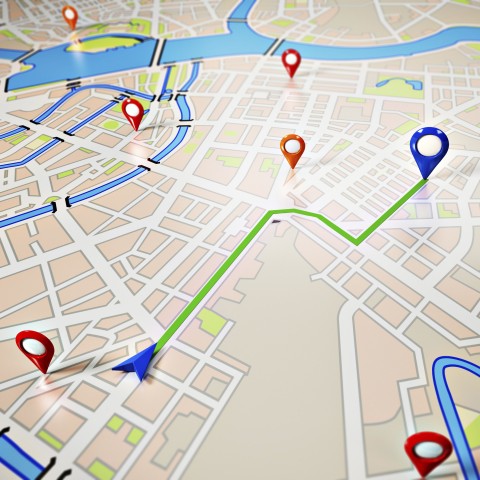
So far, we’ve covered the basic cardinal directions in Hindi. If asked, would you be able to translate the words “east” and “west” in Hindi? Well, share your answers with us in the comment box and find out how other learners are responding!
5. On the Map: Combinations
Now that you can identify the basic words for cardinal directions in Hindi, it’s time to dig a bit deeper. Because ultimately, just knowing the cardinal directions won’t suffice.
Studying combination phrases such as the northwest direction in Hindi will give you a better grip on giving and asking directions in Hindi.
| Hindi Words | English Meaning | Sentences |
| उत्तर-पूर्वी (uTTar-puurvi) | Northeast | मैं भारत के उत्तर-पूर्वी राज्य की रहने वाली हूँ। मैं मणिपुर से हूँ। main bhaaraT ke uTTar-puurvii raajy kii rahaNe vaaLii huun. main manipur Se huun. I am a resident of a northeastern state of India. I am from Manipur. |
| उत्तर-पश्चिमी (uTTar-pascimi) | Northwest | राजस्थान भारत के उत्तर-पश्चिमी भाग में है। raajaSTHaaN bhaaraT ke uTTar-pascimi bhaag men hai. Rajasthan is in the northwestern part of India. |
| दक्षिण-पूर्वी (Daksin-puurvii) | Southeast | उड़ीसा, आंध्र प्रदेश, व तमिलनाडु दक्षिण-पूर्वी राज्य हैं। udiiSaa, aanDHr praDes, va TamiLaNaadu Daksin-puurvii raajy hain. Orissa, Andhra Pradesh, and Tamilnadu are the southeastern states of India. |
| दक्षिण-पश्चिमी (Daksin-pascimii) | Southwest | महाराष्ट्र, कर्नाटक, और केरल भारत के दक्षिण-पश्चिमी भाग में हैं। mahaaraastra, karNaatak, aur keraL bhaaraT ke Daksin-pascimii bhaag men hain. Maharashtra, Karnataka, and Kerala are in the southwestern part of India. |
- As you can see, in the examples above, the “north” direction in Hindi has been divided into two basic directions: “northeast” which is उत्तर-पूर्वी (uTTar-puurvi) and “northwest” which is उत्तर-पश्चिमी (uTTar-pascimii).
- Similarly, “south” is subdivided into “southeast” which is दक्षिण-पूर्वी (Daksin-puurvii) and “southwest” which is दक्षिण-पश्चिमी (Daksin-pascimii).
6. On the Road
In the section above, we discussed the cardinal directions in Hindi. Now, it’s time to explore how to ask for or how to give directions in Hindi when we’re on the road.
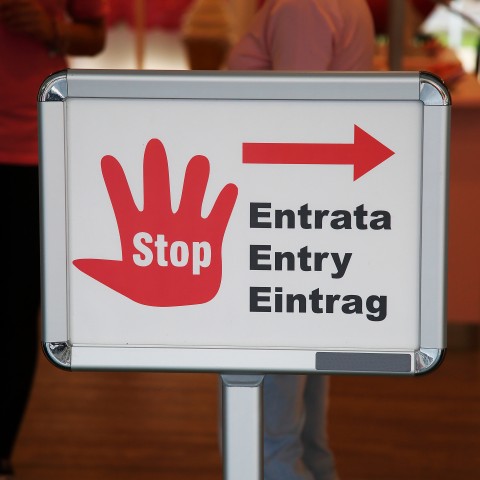
1- Basic Opposites
Below we’ve tried to cover the most common words used for giving directions in the Hindi language. Let’s start with the basic opposites in Hindi.
| Hindi Words | English Meaning | Sentences |
| ऊपर / पर (uuper / par) | on / above | यह किताब ऊपर मेज़ पर रख दो। yah kiTaab uupar mez par rakh Do. Put this book on the table above. | ऊपर की मंज़िल पर जाकर फिर दाएं हाथ मुड़ जाना। uupar kii maNziL par jaakar phir Daayen haaTH mud jaaNaa. Go to the upper floor and then turn to the right. |
| नीचे (Niice) | below / under / down | बिल्ली बिस्तर के नीचे बैठी है। biLLii biSTar ke Niice baithii hai. The cat is sitting under the bed. |
| पुल से नीचे उतरकर बाएं हाथ पर सिनेमा हॉल मिलेगा। puL Se Niice uTarakar baayen haath par SiNemaa hauL miLegaa. You’ll find a cinema hall down the bridge on the left side. | ||
| आगे (aage) | next to | मेरा घर इसी गली के आगे है। meraa ghar iSi gaLii ke aage hai. My house is right next to this street. |
| पहले चौराहे के आगे दाहिने हाथ पर एक किताब की दुकान है। pahLe cauraahe ke aage DaahiNe haaTH par ek kiTaab kii DukaaN hai. There is a bookshop on the right-hand side after the first intersection. | ||
| पीछे (piiche) | behind / at the back of | घर के पीछे बहुत सुन्दर बग़ीचा है। ghar ke piiche bahuT SuNDar baġiicaa hai. There is a really beautiful garden at the back of the house. |
| मेरी कार के पीछे जो बस थी वो बाएं हाथ मुड़ गयी। merii kaar ke piiche jo baS THii wo baayen haaTH mud gayii. The bus which was following my car turned left. | ||
| सामने (SaamaNe) | in front of / at the front | सड़क के सामने शहर का सबसे मशहूर भोजनालय है। Sadak ke SaamaNe sahar kaa SabaSe mashuur bhojaNaaLay hai. The most famous restaurant in the town is in front of the road. |
| चाय की दुकान के सामने एक ब्यूटी पार्लर है जिसके दाहिनी ओर बेकरी है। caay kii DukaaN ke SaamaNe ek byutii paarLar hai, jiSake DaahiNii or bekarii hai. In front of the tea shop, there’s a beauty parlor which has a bakery on its right side. | ||
| दूर (Duur) | far | सब्ज़ी मंडी यहाँ से काफ़ी दूर है। Sabzii maNdii yahaan Se kaafii Duur hai. The vegetable market is quite far from here. |
| किताब की दुकान दूर है लेकिन एक पुस्तकालय पास में ही है। kiTaab kii DukaaN Duur hai LekiN ek puSTakaaLay paaS men hii hai. The book shop is far, but the library is nearby. | ||
| पास / नज़दीक (paaS / NazaDiiq) | near / close | मेरा दोस्त पास में ही रहता है। meraa DoST paaS men hii rahTaa hai. My friend lives nearby. |
| होटल पार्क के नज़दीक है मगर झील से दूर है। hotaL paark ke NazaDiiq hai magar jhiiL Se Duur hai. The hotel is close to the park but away from the lake. | ||
| दायें (Daayen) | right | कृपया दाएं हाथ मुड़ जाइये। kripayaa Daayen haaTH mud jaaiye. Please, turn right. |
| तुम्हें दाहिने जाकर बाएं मुड़ना होगा। Tumhen DaahiNe jaakar baayen mudaNaa hogaa. You would have to go right and then turn left. | ||
| बायें (baayen) | left | भारत में सड़क पर बायीं तरफ़ चलने का नियम है। bhaaraT men Sadak par baayiin Taraf caLaNe kaa Niyam hai. In India, it’s a rule to walk on the left side of the road. |
| क्या आप टैक्सी बायीं ओर न लेकर दायीं ओर लेंगे? kyaa aap taikSii baayiin or Naa Lekar Daayiin or Lenge? Would you turn the taxi to the right instead of left? |
- As we already know, “left” in Hindi is known as बायें (baayen), whereas “right” is known as दायें (Daayen).
- “To turn” is मुड़ना (mudaNaa) and “turn” [verb] is मुड़ो / मुड़ जाओ / मुड़ जाइए (mudo / mud jaao / mud jaaiyev). Similarly, “to go” is जाना (jaaNaa) and “go” is जाओ / जाइए (jaao / jaaiye).
So, with these words, you can easily make some simple yet really useful Hindi phrases.
For instance:
-
“Turn left” in Hindi is बायें मुड़ जाओ / जाइए (baayen mud jaao / jaaiye).
“Turn right” in Hindi is दायें मुड़ जाओ / जाइए (Daayen mud jaao / jaaiye).
“Turn back” in Hindi is पीछे मुड़ जाओ / जाइए (piiche mud jaao / jaaiye).
Adding some more phrases to this list of directions in Hindi:
-
“Go down” in Hindi is नीचे जाओ / जाइए (Niice jaao / jaaiye).
“Go back” in Hindi is पीछे जाओ / जाइए (piiche jaao / jaaiye).
“Go up” in Hindi is ऊपर जाओ / जाइए (uupar jaao / jaaiye).
“Go straight” in Hindi is सीधे जाओ / जाइए (SiiDHe jaao/jaaiye).
And lastly, here are some other essential phrases to keep in mind:
-
“Near” in Hindi is पास (paaS).
“Far” in Hindi is दूर (Duur).
“In front of” in Hindi is के सामने (ke SaamaNe).
“Beside” in Hindi is के पास (ke paas).
“Go straight” in Hindi is ठीक सीधे (thiik SiiDHe).

2- Direction Phrases with References
Our next step is to talk about the directions with different references. So, let’s have a look at them.
| Hindi Words | Hindi Words | Sentences |
| किनारे पर (kiNaare par) | around the corner | गली के किनारे पर एक दर्ज़ी की दुकान है। gaLii ke kiNaare par ek Darzii kii DukaaN hai. There’s a tailor’s shop around the corner of the street. |
| दुकान के आगे (DukaaN ke aage) | next to the shop | दुकान के आगे बहुत बड़ा पार्क है। DukaaN ke aage bahuT badaa paark hai. There’s a huge park next to the shop. |
| चौराहे के पास (cauraahe ke paaS) | by the intersection | अस्पताल चौराहे के पास ही है। aSpaTaaL cauraahe ke paaS hii hai. The hospital is by the intersection. |
| अगले स्टॉप पर (agaLe Staup par) | at the next stop | मुझे अगले स्टॉप पर उतरना है। mujhe agaLe Staup par uTaraNaa hai. I have to get off at the next stop. |
| सड़क पार (Sadak paar) | across the road | सड़क पार लैपटॉप का शोरूम है। Sadak paar Laipataup ka soruum hai. There’s a laptop showroom across the road. |
| दो गली छोड़ के (Do gaLii chod ke) | leaving two streets | दो गली छोड़ के मेरे दोस्त का घर है। Do gaLii chod ke mere DoST kaa ghar hai. Leaving two streets is my friend’s house. |
So far, we’ve almost covered the complete way of asking for directions in Hindi, and yet there’s so much more to learn and explore!
Below, you’ll read about the different words used for landmarks and how to use them properly.
7. Landmarks
Every town in every country has landmarks. Some are quite famous and others need a little more introduction. Landmarks make it so much easier for us to find places and check if we’re moving on the right path.
What are the famous landmarks in your town? Share the unique statues, buildings, and one-of-its-kind places in your city in the comment box below and check out what others are posting as well!
1- In the City
| Hindi Words | English Meaning | English Meaning |
| हवाई अड्डा (havaaii addaa) | airport | हवाई अड्डा कितना दूर है? havaaii addaa kiTaNaa Duur hai? How far is the airport? |
| सबवे (Sab ve) | subway | चौराहे के आगे एक सबवे आएगा। cauraahe ke aage ek Sabave aayegaa. There will be a subway next to the intersection. |
| शहर के बीचोंबीच (sahar ke biiconbiic) | center of the city | यह इमारत शहर के बीचोंबीच में है। yah imaaraT sahar ke biiconbiic men hai. This building is right in the center of the city. |
| पार्क / बग़ीचा (paark / baġiicaa) | park | क्या तुम पार्क में बैठना चाहोगे? kyaa Tum paark men baithaNaa caahoge? Would you like to sit in the park? |
| होटल (hotaL) | hotel | होटल यहाँ से चार किलोमीटर दूर है। hotaL yahaan Se caar kiLomiitar Duur hai. The hotel is four kilometers from here. |
| जलपान गृह / भोजनालय (jaLapaaN grih / bhojaNaaLay) | restaurant | यहाँ कहीं शाकाहारी भोजनालय मिलेगा? yahaan kahiin saakaahaarii bhojaNaaLay miLegaa? Is there any vegetarian restaurant here? |
| अस्पताल (aSpaTaaL) | hospital | मेरी दोस्त एक बड़े अस्पताल में नर्स है। merii DoST ek bade aSpaTaaL men NarS hai. My friend works as a nurse at a big hospital. |
| बैंक (baink) | bank | बैंक शाम को ५ बजे बंद हो जाता है। baink saam ko paanc baje baND ho jaaTaa hai. The bank closes at five in the evening. |
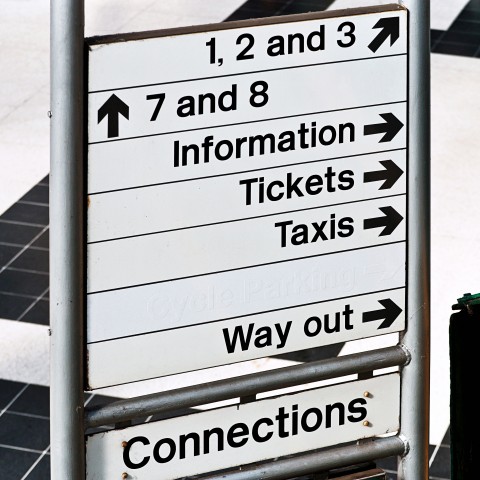
2- On a Road
| Hindi Words | English Meaning | English Meaning |
| चौराहा (cauraahaa) | intersection | यह इस शहर का सबसे भीड़-भाड़ वाला चौराहा है। yah iS sahar kaa SabaSe bhiid-bhaad vaaLaa cauraahaa hai. This is the busiest intersection in the whole town. |
| तिराहा (Tiraahaa) | trijunction | अगले मोड़ पर एक तिराहा आएगा, वहां से दाएं घूम जाइये। agaLe mod par ek Tiraahaa aayegaa, vahaan Se Daayen ghuum jaaiye. There’s a trijunction at the next turn. Turn right from there. |
| लाल बत्ती (LaaL baTTii) | traffic light / red light | हर किसी को लाल बत्ती के नियम का पालन करना चाहिए। har kiSi ko LaaL baTTii ke Niyam kaa paaLaN karaNaa caahiye. Everyone should follow the traffic rules. |
| ज़ेब्रा क्रॉसिंग (zebraa krauSing) | zebra crossing | सड़क पार करते वक़्त हमेशा ज़ेब्रा क्रॉसिंग का इस्तेमाल करें। Sadak paar karaTe vaqT hamesaa zebraa krauSing kaa iSTemaaL karen. Always use the zebra crossing while crossing the road. |
| गोल चक्कर (goL cakkar) | roundabout | हमें पिछले गोल चक्कर से बाएं घूम जाना चाहिए था। hamen pichaLe goL cakkar Se baayen ghuum jaaNaa caahiye THaa. We should have turned left at the last roundabout. |
| फ़्लाईओवर (fLaaiiover) | flyover | इस फ़्लाईओवर से केवल चार पहिया वाहनों को जाने की अनुमति है। iS fLaaiiover Se kevaL caar pahiyaa vaahaNon ko jaaNe kii aNumaTi hai. Only four-wheelers are permitted to go through this flyover. |
| पुल (puL) | bridge | पुल पार कर अगला यू -टर्न ले लीजिये। puL paar kar agaLaa yuu-tarN Le Lijiye. Take the U-turn after crossing the bridge. |
| सड़क (Sadak) | road | यह सड़क दिल्ली से होते हुए सीधा आगरा तक जाती है। yah Sadak DiLLii Se hoTe hue SiiDHaa aagaraa Tak jaaTii hai. This road goes through Delhi and straight to Agra. |
Now that we know how to talk about the landmarks on a road or in the main city, let’s jump to phrases related to the main points in a building or similar structure!
3- In a Structure / Building
| Hindi Words | English Meaning | Sentences |
| शौचालय (saucaaLay) | restroom / toilet | बायीं तरफ़ वाला शौचालय महिलाओं के लिए है व दाहिनी तरफ़ वाला पुरुषों के लिए है। baayiin Taraf vaaLaa saucaaLay mahiLaaon ke Liye hai va DaahiNi Taraf vaaLaa puruson ke Liye hai. The restroom on the left side is for women and the one on the right side is for men. |
| प्रतीक्षालय (praTiiksaaLay) | waiting room | सभी यात्री प्रतीक्षालय में रेलगाड़ी का इंतज़ार कर रहे थे। Sabhii yaaTrii praTiiksaaLay men reLagaadii kaa iNTazaar kar rahe THe. All the passengers were waiting for the train in the waiting room. |
| लिफ़्ट (Lift) | elevator / lift | लिफ़्ट से चौथी मंज़िल पर चले जाओ। Lift Se cauTHii maNziL par caLe jaao. Take the elevator to the fourth floor. |
| पार्किंग (paarking) | parking lot | मॉल में पार्किंग की जगह बेसमेंट में है। mauL men paarking kii jagah beSameNt men hai. The parking lot in the mall is in the basement. |
| अंदर आने का गेट (aNDar aaNe kaa get) | entry gate | इमारत के भीतर आने के लिए अंदर आने का गेट उपयोग करें। imaaraT ke bhiiTar aaNe ke Liye aNDar aaNe kaa get upayog karen. Use the entry gate to get inside the building. |
| बाहर जाने का गेट (baahar jaaNe kaa get) | exit gate | बाहर जाने का गेट दूसरी तरफ़ है। baahar jaaNe kaa get DuuSarii Taraf hai. The exit gate is on the other side. |
8. Must-Know Phrases for Asking for Directions

Now, how to find directions in Hindi.
In India, the tone and colloquial words play a great role when you’re trying to ask for directions. Subtle manners and proper communication go a long way!
1- Polite Phrases to Start the Question
Obviously, you can’t throw a question on someone just like that. It’s important to seek their attention and start a chit-chat without offending them. Take a look at these polite phrases to get the job done!
- ज़रा सुनिए / माफ़ कीजियेगा
zaraa SuNiye / maaf kiijiyegaa
Excuse me. - मुझे कुछ पूछना था
mujhe kuch puuchaNaa THaa
May I ask something? - मुझे यह जानना था कि… (अगली बस कब आएगी)?
mujhe yah jaaNaNaa THaa ki… (agaLii baS kab aayegii)?
I wanted to know… (when would the next bus arrive)? - क्या आप बता सकते हैं कि… (पीने का पानी कहाँ मिलेगा?)
kyaa aap baTaa Sakate hain ki… (piiNe kaa paaNii kahaan miLegaa)?
Could you please tell me… (where I can get some drinking water)?
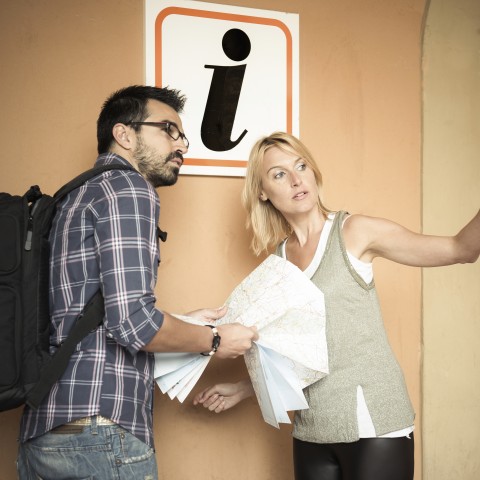
2- Asking for Directions
Once you’ve grabbed their attention and the other person is more willing to listen to you, you can now ask them for directions with these useful Hindi phrases!
- बाथरूम / शौचालय किधर होगा?
baaTHaruum / saucaaLay kiDHar hogaa?
Where is the restroom? - क्या आस-पास कोई किराने की दुकान मिलेगी?
kyaa aaS-paaS koii kiraaNe kii DukaaN miLegii?
How do I get to a nearby convenience store? - मैक डॉनल्ड्स यहाँ से कितनी दूर होगा?
maik DoNaLDS yahaan Se kiTaNii Duur hogaa?
How far is McDonald’s from here?
3- Courtesy Phrases to Thank People
And what could be a better way to end the conversation than with a token of gratitude? After they’ve briefed you and cleared your confusion, sharing a small thank-you moment will bring smiles to every face. So, the next time somebody helps you, get in their good graces with these courtesy phrases.
- धन्यवाद
DHaNyavaaD
Thank you. - मदद के लिए शुक्रिया
maDaD ke Liye sukriyaa
I appreciate your help. - मैं समझ गया / गयी
main Samajh gayaa / gayii
I’ve got it!
9. Must-Know Phrases for Giving Directions
To give directions to someone, you’ll need to know a few more handy phrases.
Sometimes, just a tiny indication is enough to clear the clouds and have a smooth ride ahead. What are those handy phrases? Below are some useful driving directions in Hindi, and other directions to help someone get around or find their way.
| Hindi Phrases | English Meaning |
| आगे जाएं (aage jaayen) | Go straight/further. |
| पीछे मुड़ें (piiche muden) | Turn back. |
| यू-टर्न ले लीजिये (yuu-tarN Le Liijiye) | Take a U-turn. |
| दायें / बाएं मुड़ें (Daayen / baayen muden) | Turn right / left. |
| चौराहे से दाएं / बाएं मुड़ें (cauraahe Se Daayen / baayen muden) | Take a right / left at the intersection. |
| दूसरी मंज़िल पर (DuuSarii maNziL par) | on the second floor |
| चौथी मंज़िल पर (cauTHii maNziL par) | on the fourth floor |
| ऊपर / नीचे जाएं (uupar / Niice jaayen) | Go upstairs / downstairs. |
| चलते रहिये / आगे चलते जाइये (caLaTe rahiye/ aage caLaTe jaaiye) | Keep going. |
| रुक जाइये (ruk jaaiye) | Stop. |
| ज़रा जल्दी करिये (zaraa jaLDii kariye) | Hurry up. |
| धीरे चलिए (DHiire caLiye) | Slow down. |
| आप देख कर जान जायेंगे (aap Dekh kar jaaN jayenge) | You’ll know it once you see it. |
| आप पहचान जायेंगे (aap pahacaaN jayenge) | You won’t miss it. |
10. Quick Summary with an Example Situation
Suppose you’re traveling to India and wish to see the Taj Mahal. Your flight lands and you check in at a nice hotel. Naturally, you and the hotel manager begin a conversation, and you ask them in Hindi how to reach the historical monument.
The whole chat between you and the manager may go something like this:
You: मुझे ताज महल देखना है. क्या आप बता सकते हैं कि टैक्सी से कैसे जाना होगा?
- mujhe Taaj mahaL DekhNaa hai. kyaa aap baTaa SakTe hain ki taikSii Se kaiSe jaaNaa hogaa?
“I wish to go and visit the Taj Mahal. Could you please tell me how to go there by taxi?”
Manager: जी, ज़रूर. टैक्सी स्टैंड होटल से २ किलोमीटर दूर बाईं तरफ़ है. पहले सीधे जाइये, फ़िर पहले चौराहे से बाएं मुड़ जाइये. टैक्सी लेकर आप को सीधे जाना होगा. तिराहे से दाहिनी तरफ़ मुड़ते ही ताज महल दिखेगा. ताज महल का मुख्य द्वार लाल बत्ती वाली सड़क के पीछे है.
- jii zaruur. taikSii StainD hoteL Se Do kiLomiitar Duur baayiin Taraf hai. pehLe SiiDHe jaaiye, fir cauraahe se baayen muṛ jaaiye. taikSii Lekar aap ko SiiDHe jaaNaa hogaa. Tiraahe Se DaahiNii Taraf muṛTe hii Taaj mahaL Dikhegaa. Taaj mahaL kaa mukhya Dvaar LaaL baTTii vaaLii Saṛak ke piiche hai.
“Yes, of course. The taxi stand is two kilometers away from the hotel to its left. First, you need to go straight, then turn left at the first intersection. When you get into the taxi, go straight again. When you turn to the right, at the trijunction, you can see the Taj Mahal. The main gate of the Taj Mahal is at the back of the traffic light road.”
You: ओह, बताने के लिए बहुत शुक्रिया. क्या आप ताज महल के भीतर जाने का रास्ता बता सकते हैं?
-
oh, baTaaNe ke Liye bahauT sukriyaa. Kyaa aap Taaj mahaL ke bhiitar jaaNe kaa raaSTaa baTaa SakTe hain?
“Oh, right! Could you please explain the way to get inside the Taj Mahal gate?”
Manager: जी, मुख्य द्वार से घुसते ही, आपको एक बग़ीचा दिखेगा. ताज महल की इमारत बगीचे के बिलकुल बीचो-बीच में है. यह यमुना नदी के दक्षिण दिशा में है.
-
jii, mukhya Dvaar Se ghuSTe hii, aapko ek bagiicaa Dikhegaa. Taaj mahaL kii imaaraT bagiice ke biLkuL biico-biich men hai. yeh yamuNaa NaDii ke Daksin men hai.
“Yes, as you enter the main gate, you will see a huge garden. The Taj Mahal building is right at the center of this garden. It is in the south of the Yamuna River.”
You: आपका बहुत धन्यवाद.
-
aapkaa bahauT DHaNyavaaD
“Many, many thanks to you.”
11. Climbing the Hindi Learning Ladder with HindiPod101.com
At HindiPod101.com, we believe that learning doesn’t have to be boring. And to make this experience entertaining yet informative for you, we leave no stone unturned. Our interesting lesson materials, amazing videos, and committed help center prove that time and again!
So, what are you waiting for? Join our Hindi learning family and become a member by downloading our user-friendly mobile application.
We hope you’ve enjoyed our lesson! How many direction words and phrases in Hindi have you mastered by now? Let us know in the comment box below! In case you have any doubts or questions, feel free to share them with peers on our HindiPod101 forum.
Have a good time learning!










